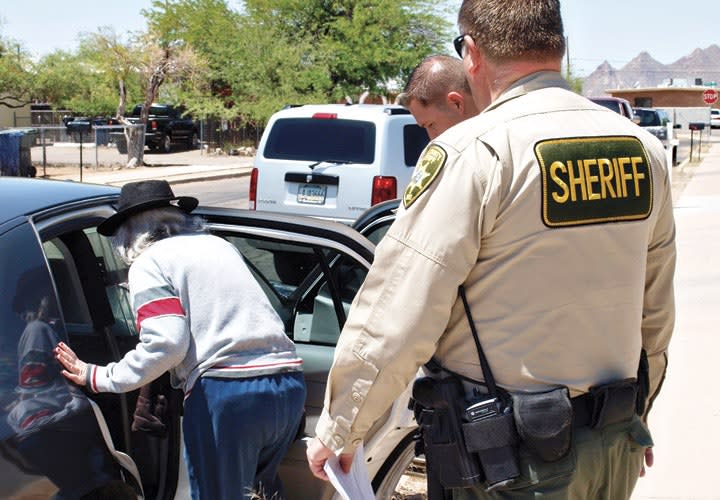A sheriff's department investigation later revealed that Loughner had been repeatedly identified as mentally unstable by Pima Community College teachers, as well as students. A month before the shooting, his behavior became so erratic that campus police delivered a notice of immediate suspension to his parents—who never arranged the mental health evaluation they were supposed to.
"We didn't have the connections or communications between mental health providers and law enforcement that we do now," Staten says. "Authorities did everything they could, with the resources they had at the time."
The driving force behind MHST is Byron Gwaltney, a Pima County Sheriff's Department bureau chief who served as incident commander at the Loughner shooting. The unit began with two full-time deputies assigned to serve petitions for evaluation or treatment, and expanded to include three deputies, two detectives, a sergeant, and a civilian researcher.
Tucson Police Department joined the team earlier this year, adding two additional officers, a detective and a sergeant. The group meets monthly with local behavioral health providers and other stakeholders to debrief significant cases, and is actively seeking to bring other Southern Arizona law enforcement agencies into the mix.
MHST officers follow up on tips from various sources, including the general public. They conduct their own expanded investigations and surveillance operations, and take into custody individuals who fail to comply with court-ordered treatment plans. Because they can be directly dispatched to incidents with a mental health connection, team members also help reduce the call load for patrol.












